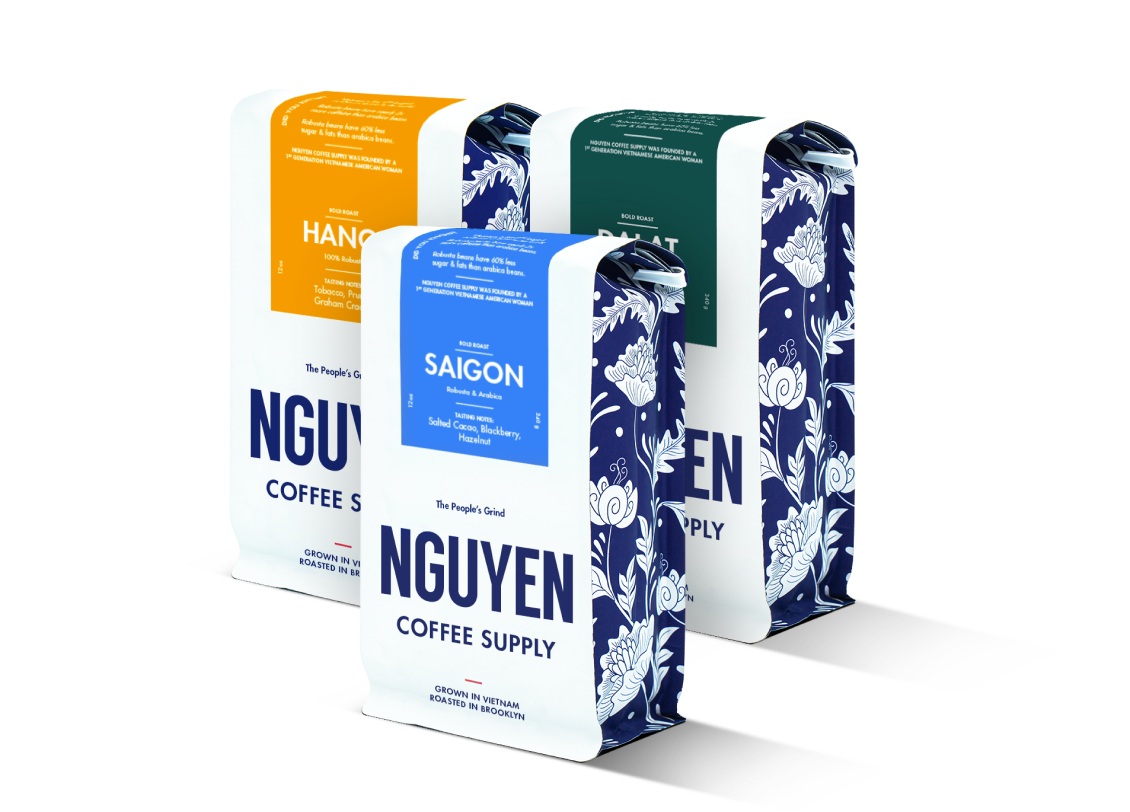

- FEATURED ON IMBIBE

Create for yourself or as a gift for your loved ones
Subscribe nowMe and mom just enjoyed the Nguyen phin drip experience. Wow. Proud of your work. We without hesitation enjoy the Vietnamese coffee and recommend your products. Thank-you to the Nguyen staff and tradition. From Canada eh!
Vietnamese coffee has grown in popularity over the past few years in places like the United States, with demand only expected to increase over the years. Vietnam is also the second largest producer of coffee in the world today, and it has been for years now. More impressive than this, though, is the fact that Vietnam is the leading producer of robusta coffee beans in the world.
During the French colonial era when Vietnam was known as French Indochina, coffee was an import with European ties. Coffee was first brought to Vietnam in the mid-1800s. Initially unpopular among Vietnamese people, coffee became a growing part of Vietnamese culture much like bread, pastries, and other French imports did over time.
As people discovered that areas of Vietnam were conducive to coffee production, the trade proliferated. By the mid-1900s, most of the production was clustered in the Central Highlands of Vietnam where over 80% of the coffee continues to be grown to this day, namely robusta. Robusta coffee was easier to cultivate and thanks to the red basalt soil of the Central Highlands, Vietnamese robusta coffee has a distinctive and iconic taste unlike other coffee grown around the world.
Many of the coffee growers in the Central Highlands continued to grow coffee after the French exited, but not without issue. As the Vietnamese government began to converge on market goods, coffee was regulated, which created a vacuum for the crop. When Vietnam gained its independence from the French, the post-war economy made coffee a luxury commodity only available to the affluent. Smuggling of coffee was extremely common, and thus exacerbated the market conditions of coffee.
With the Đối Mới Reforms beginning in 1986, coffee production in Vietnam saw a new light, but not without initial troubles. In a race for profit, many farmers were not incentivized to improve the quality of their coffee, resulting in production that is to this day mired with a bad reputation for robusta as cheap, rough, and bad. During these times, many farmers struggled to make ends meet and often filled their coffee sacks with other materials such as corn, twigs, or even dirt.
The social reforms in the government allowed for market diversification and allowed farmers to grow coffee for various markets at different prices, but this only took foot as companies began to focus on quality control and exports to Western countries like the United States, Germany, and Italy.
While coffee in Vietnam has been considered exceptional by national experts, the international community has long scorned its products due to outdated preconceptions despite growing advancements in the Vietnamese coffee industry.
Immediately after the 1986 reforms, Vietnamese coffee production boomed with much of it going to international conglomerates for instant coffee, coffee syrup, and cheap blends. As time progressed, many of the local farmers who specialized in growing high quality robusta coffee were overshadowed by their large-scale, commercial competitors.
Today, Vietnamese robusta coffee remains a mixed market with over 90% of all coffee produced in Vietnam being exported. However, the growing trend of specialty coffee in Vietnam has allowed for the development of high quality robusta coffee enjoyed both domestically and internationally.
While much of the coffee remains produced for commercial blends, an increasing number of farmers in Vietnam are converting their production to prioritize specialty robusta coffee as demand for it grows and old reputations die off. With these changes, farmers are able to improve their own livelihoods, maintain their lands through better growing practices, and position the mighty Vietnamese robusta coffee bean as a coveted commodity for the future.
As heritage brands and single origin farms gain notoriety in the international coffee community, Vietnamese robusta makes its mark within the industry and cements its status in history as a once scorned bean that is in actuality a gem among its counterparts. Don’t believe us? Try our 100% single origin robusta for yourself!
Learn how to grind robusta coffee beans here.